|
Books relating to Guam POWS
Hong
Kong Veterans Commemorative Assocation - books on Allied POWs
References
Containing Information about Prisoners of War of the Japanese in World
War II - ADBC site
Books
in Japanese - POW Research Network Japan (English website)
Books
about Internment Camps In Asia During WWII - Books about
civilian internees and camps
Recommended
Reading - Linda Dahl's website
Hall's
Manila Bibliography (PDF) - great collection of over 500 titles
(courtesy of Roderick
Hall, one of the authors of Manila Memories; see also the Philippine
Scouts website for this and other book updates)
From Fukuoka Camp #1 website:
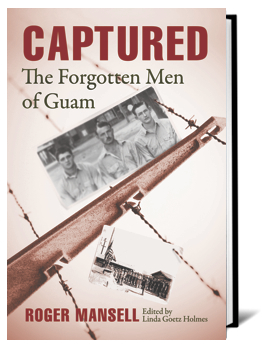 |
|
|
|
 |
捕
虜収容所 ・民間人抑留所事典 : 日本国内編 (Encyclopedia of POW Camps and Civilian
Internment Camps - Japan Proper Edition)
This 960-page work (in Japanese only), produced by the POW Research
Network Japan, is a comprehensive encylopedia detailing the 130 Allied
POW camps and 29 civilian internment camps that were located in
mainland Japan. Filled with statistics, this is an excellent resource
for research -- sources and references alone account for 100 pages.
|
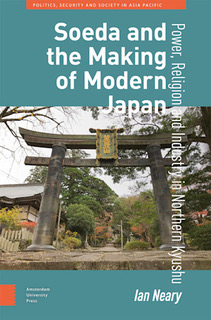 Soeda and the Making of Modern Japan:
Power, Religion and Industry in Northern Kyushu
by Ian Neary (2025) - Includes a short section on Fukuoka #5, "Coal
mines in Soeda in the first half of the twentieth century owned by the
Kurauchi family drove the modernization of the town and contributed to
the industrialization of the country. During the Pacific war, these
mines employed Korean labourers and Allied POWs." Soeda and the Making of Modern Japan:
Power, Religion and Industry in Northern Kyushu
by Ian Neary (2025) - Includes a short section on Fukuoka #5, "Coal
mines in Soeda in the first half of the twentieth century owned by the
Kurauchi family drove the modernization of the town and contributed to
the industrialization of the country. During the Pacific war, these
mines employed Korean labourers and Allied POWs."
|
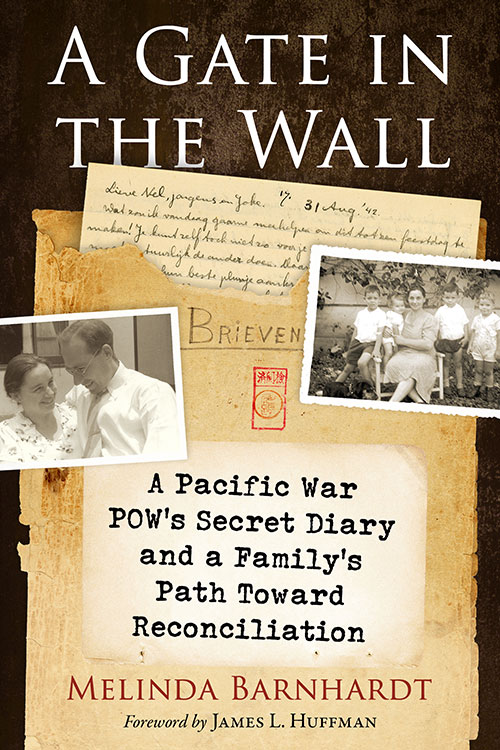 A Gate
in the Wall by Melinda Barnhardt A Gate
in the Wall by Melinda Barnhardt
"This book shares the story of the Lindeijers, a Dutch colonial family
in Indonesia, first during their time as captives of the Japanese
during World War II and then during the postwar decades, as they
struggled to come to terms with their wartime trauma. The protagonists
speak, as much as possible, for themselves through their documents. The
father, in his prohibited POW diary, records harsh, brutal treatment
but simultaneously reveals a level of complexity among his captors that
is unusual in war memoirs. The mother’s farewell letter dictated before
her death eschews hatred, focusing on a way for her family to move
forward. And finally, in recorded testimony, the eldest son grapples
with the trauma of his family’s imprisonment, but also the Dutch
oppression of Indonesia, stimulating a remarkable response in Japan and
Indonesia today. The family’s story traces a pathway from wartime
hatred to postwar reconciliation—across generations and continents."
NOTE: This book focuses specifically on the experiences of POWs from
the USS Houston and the Texas National Guard who were held at
Sendai POW Camp 4-B. |
 Bataan
- Corregidor - Prisoner of War: The Odyssey of an Underage Combat
Infantryman in World War II by Wayne Wright Bataan
- Corregidor - Prisoner of War: The Odyssey of an Underage Combat
Infantryman in World War II by Wayne Wright
Story of Guy Wright, 31st Infantry Regiment, Philippine Division --
Bataan and Corregidor, his movements through several POW camps in the
Philippines, two hellship voyages, and prison camps in Taiwan and
Japan. Good background info to help understand the factors leading up
to the war. See also Wright's website, Researching the Defenders of the
Philippines in World War II.
|
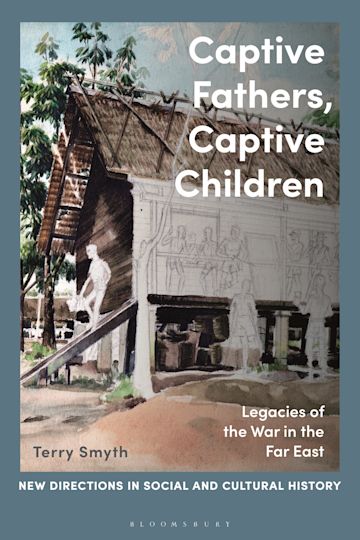 Captive
Fathers, Captive Children: Legacies of the War in the Far East by
Terry Smyth Captive
Fathers, Captive Children: Legacies of the War in the Far East by
Terry Smyth
What is it that compels so many of the children, after so many years,
to search for the details of their fathers' captivity? And how, over
the decades, have they come to terms with their childhood memories?
With interview extracts, case study material and ethnographic
observations, this work examines the processes through which the
children's memory practices came to be rooted in the POW experiences of
their fathers.
|
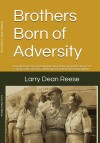 Brothers
Born of Adversity: How the Bonds of Friendship Helped Two Men Survive
the Horrors of Japanese Prison Camps and the Infamous Hell Ships During
WWII by Larry Dean Reese Brothers
Born of Adversity: How the Bonds of Friendship Helped Two Men Survive
the Horrors of Japanese Prison Camps and the Infamous Hell Ships During
WWII by Larry Dean Reese
Story of two Navy men, George Crowell and Frank Maxwell, and their
strong friendship throughout their ordeals -- captured in the
Philippines, imprisoned at Bilibid, shipped to Japan on hellships, only
to face more hardship at Fukuoka POW Camp #17. Also of interest are the
two Army nurses, both sisters of Crowell, who were able to meet their
brother on Okinawa after liberation.
|
 Telling
His Story: Pow #1000: The Bataan Death March and Japanese Pow Camps
by J. C. Pardue and Janis Pardue Hill Telling
His Story: Pow #1000: The Bataan Death March and Japanese Pow Camps
by J. C. Pardue and Janis Pardue Hill
"This memoir covers both J. C. Pardue's entry into the US Army Air
Corps and his experiences in, and after, World War II: the battle to
hold Bataan; the surrender of Bataan; the brutal, inhumane treatment on
the Death March and in the POW camps; as a slave in Japan, and as a
survivor determined to live a Christian life. Most prominent among her
father's memories was the miracle of his Bible. Surviving a direct hit
from a fragmentation bomb, confiscation in a POW camp, and disposal on
a Hell Ship, his Bible always returned. His most treasured possession,
that Bible came home with POW #1000, who attributed his survival to the
faith acquired and absorbed from the weapon he considered the most
valuable of all-his Bible."
|
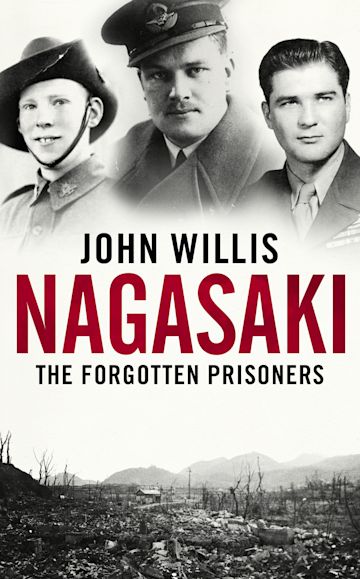 Nagasaki:
The Forgotten Prisoners by John Willis Nagasaki:
The Forgotten Prisoners by John Willis
This is a story of resilience, comradeship, and hope. Using unpublished
and rarely seen notes, interviews and memoirs, this unique book weaves
together a powerful chorus of voices to paint a vivid picture of
endurance and survival against terrifying odds.
|
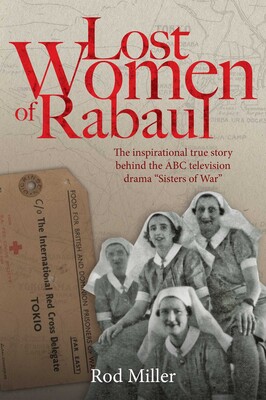 Lost
Women of Rabaul by Rod Miller Lost
Women of Rabaul by Rod Miller
Very well-documented research on the 18 Australian nurses who were
captured when the Imperial Japanese invaded Rabaul and then were sent
to mainland Japan. Much vital info on the civilian camps where they
were interned - Bund Hotel, Yokohama Rowing Club, and Totsuka. Includes
stories and photos of Etta Jones, "the first American woman to be taken
prisoner on American soil by a foreign invading force since 1812."
|
 Corsair
Down! - Tales of Rescue and Survival during World War II by Martin
Irons Corsair
Down! - Tales of Rescue and Survival during World War II by Martin
Irons
Contains firsthand accounts from surviving pilots and tales of many of
the great WWII Corsair aces, ncluding stories of POWs, e.g. Major
Gregory "Pappy" Boyington, who were held in Japanese camps Ofuna, Omori
and Niigata.
|
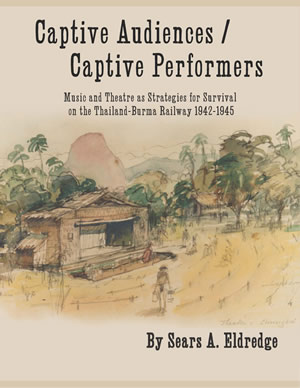 Captive
Audiences/Captive Performers: Music and Theatre as Strategies for
Survival on the Thailand-Burma Railway 1942-1945 by Sears A.
Eldredge Captive
Audiences/Captive Performers: Music and Theatre as Strategies for
Survival on the Thailand-Burma Railway 1942-1945 by Sears A.
Eldredge
The story of how music and theatre helped the 61,000 POWs (sent to SE
Asia camps) survive their ordeal. Downloadable e-book. See also Rice and Shine: Unpublished Treasures from
the FEPOW Concert Party Archive.
|
 Relentless
Hope: A True Story of War and Survival by David L. Britt Relentless
Hope: A True Story of War and Survival by David L. Britt
"The book covers the life of Chester Britt -- his time growing up in La
Crosse, his time at West Point where he graduated in 1940, his combat
in the Philippines beginning right after Pearl Harbor was attacked...
and then on Bataan, his ordeal of the Bataan Death March, his 3-1/2
years as a POW of the Japanese, and then his life after the war...
until his early death in 1953 due to health issues from his time as a
POW. We are supporting the SPECIAL
OPERATIONS WARRIOR FOUNDATION with proceeds from our book."
Future website: http://www.honormediallc.com/
|
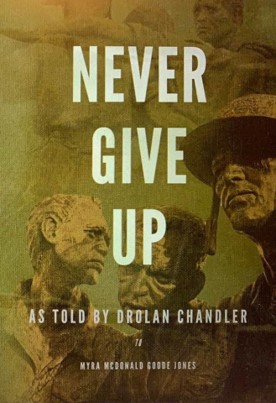 Never Give Up by Myra Jones Never Give Up by Myra Jones
"Drolan Chandler's personal story, as told to his niece, Myra Jones, of
his combat and prisoner of war experiences during World War II in the
Pacific Theater. 376-page book contains 200+ photographs of POW camps,
etc., and eighteen maps. Available also as e-book. Use coupon code
9VPUZ8 to obtain a $2.99 discount." |
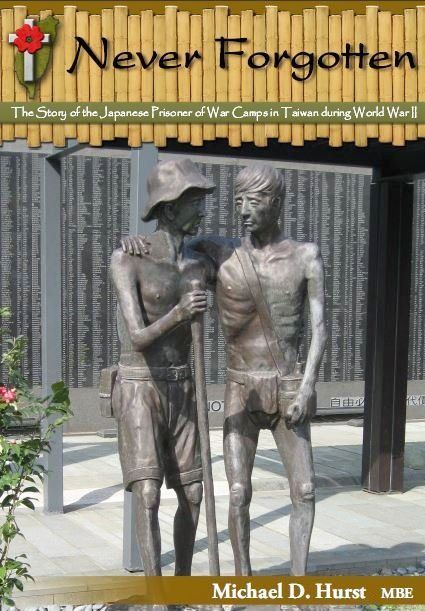 Never Forgotten... The story of the
Japanese Prisoner of War Camps in Taiwan during World War II
by Michael Hurst Never Forgotten... The story of the
Japanese Prisoner of War Camps in Taiwan during World War II
by Michael Hurst
"The story of the Japanese prisoner of war camps on the island of
Taiwan (Formosa) in the Second World War... the only book ever written
that provides the complete story of all the Taiwan camps and the men
who were interned in them." This is THE book, an encyclopedia of
information on Allied POWs who were in each of the Taiwan camps, and
the hellships that transported them to camps elsewhere in Asia.
|
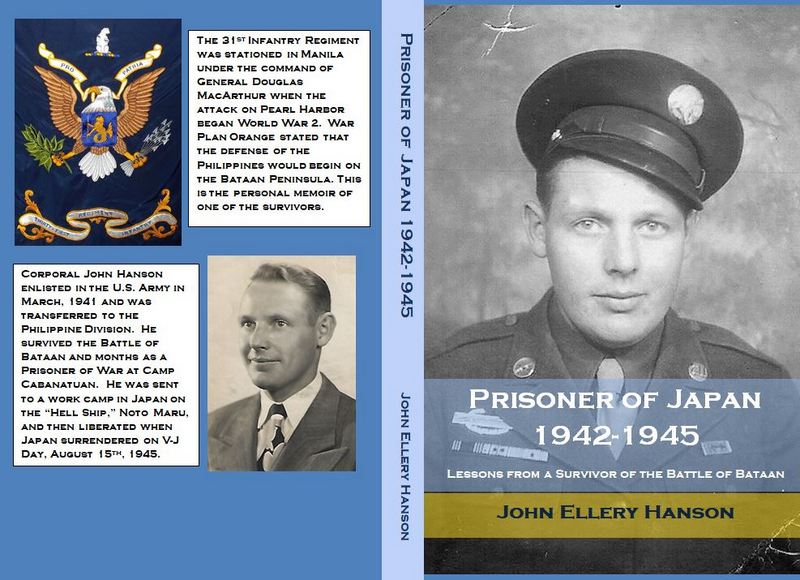 Prisoner of Japan, 1942 to 1945: Lessons
from a Survivor of the Battle of Bataan by John Hanson Prisoner of Japan, 1942 to 1945: Lessons
from a Survivor of the Battle of Bataan by John Hanson
Hanson was liberated at Nagoya POW Camp #6.
(Click on image for full resolution) |
 The Edge of
Terror: The Heroic Story of American Families Trapped in the
Japanese-occupied Philippines by Scott Walker The Edge of
Terror: The Heroic Story of American Families Trapped in the
Japanese-occupied Philippines by Scott Walker
"Story of brave American civilians on Panay during WWII. Drawing on
diaries, memoirs, family interviews, and military archives, Walker
describes daily life during the occupation and the danger these
Americans faced in their efforts to serve both God and country." |
 Valley of the
Shadow: An Account of American POWs of the Japanese by
Whitney H. Galbraith Valley of the
Shadow: An Account of American POWs of the Japanese by
Whitney H. Galbraith
"A historical narrative of Colonel Nicoll F. “Nick” Galbraith, U.S.
Army, GSC, describing his three-and-a-half years as a prisoner of the
Japanese, from the surrender of Corregidor in May, 1942, until August,
1945, when he and his fellow prisoners were rescued/released from Camp
Hoten, in Mukden, Manchuria." Note from author: "Col. Galbraith was
Gen. Jonathan M. Wainwright’s G-4 Logistics Staff officer during the
Fall of the Philippines and surrender of Corregidor. This and several
other first person accounts of senior officers of USFIL have recently
been published which offer additional insights to American POWs in the
Pacific. I have named them in my bibliography." |
 The Forgotten
Squadron: The Story of B Squadron, 3rd The King's Own Hussars, in the
Far East 1942-45 by Brian Williams The Forgotten
Squadron: The Story of B Squadron, 3rd The King's Own Hussars, in the
Far East 1942-45 by Brian Williams
"My late father-in-law served with the British Army's 3rd Hussars and
was captured in Java in 1942. I am writing a history of what happened
to his unit after capture." |
 Bataan Survivor: A POW’s Account of
Japanese Captivity in World War II by David L. Hardee;
edited by Frank A. Blazich Jr. (2017) Bataan Survivor: A POW’s Account of
Japanese Captivity in World War II by David L. Hardee;
edited by Frank A. Blazich Jr. (2017)
"Personal memoir of Colonel David L. Hardee, first drafted at sea from
April-May 1945 following his liberation from Japanese captivity... a
thorough treatment of his time in the Philippines... carefully edited,
illustrated and annotated to unlock the true depths of Hardee’s
experience as a soldier, prisoner, and liberated survivor of the
Pacific War." |
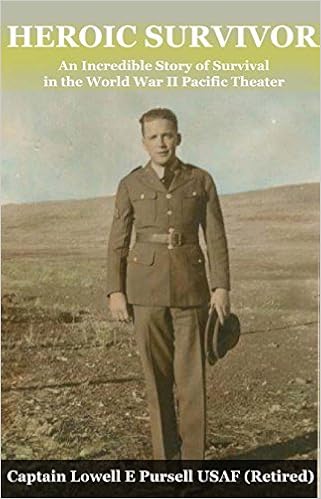 Heroic Survivor: An Incredible Story of
Survival in the World War II Pacific Theater by Captain
Lowell E. Pursell USAF (Retired) Heroic Survivor: An Incredible Story of
Survival in the World War II Pacific Theater by Captain
Lowell E. Pursell USAF (Retired)
"We are letting you know that my father's book is now published as an
Ebook. This is his story as he wrote it upon his return to the US in
1945. What we did was to write around his story putting together
pictures and family memories. I am glad that after 71 years it is
finally out as the book he wanted it to be and is no longer sitting in
my basement. It is a true piece of the American history of WWII in the
Pacific theater and the experiences of our POWs." --Virginia
Pursell-Meyer |
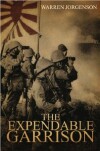 The
Expendable Garrison by Warren Jorgenson (Tate Pub. 2015) - Good
biography covering this Marine's time in the Midwest US, Shanghai,
Corregidor and Hanawa. The
Expendable Garrison by Warren Jorgenson (Tate Pub. 2015) - Good
biography covering this Marine's time in the Midwest US, Shanghai,
Corregidor and Hanawa. |
 Deadline: Captain Charlie's Bataan Diary
by Charles Underwood (2013) Deadline: Captain Charlie's Bataan Diary
by Charles Underwood (2013) |
 CUB: Harrowing Stories of Army Life in
China, Bataan and Korea by Mike Gaffney (2014) CUB: Harrowing Stories of Army Life in
China, Bataan and Korea by Mike Gaffney (2014) |
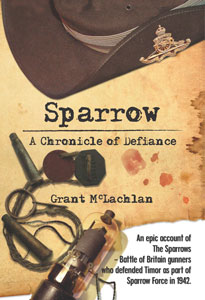 Sparrow
- A Chronicle of Defiance: An epic account of The Sparrows - Battle of
Britain gunners who defended Timor in 1942 as part of Sparrow Force
by Grant McLeod McLachlan (2012) - Impressive and well-researched work Sparrow
- A Chronicle of Defiance: An epic account of The Sparrows - Battle of
Britain gunners who defended Timor in 1942 as part of Sparrow Force
by Grant McLeod McLachlan (2012) - Impressive and well-researched work |
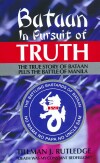 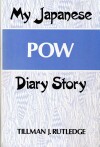 Bataan: In Pursuit of Truth - The True
Story of Bataan, Plus: The Battle of Manila by Tillman J.
Rutledge (2014) Bataan: In Pursuit of Truth - The True
Story of Bataan, Plus: The Battle of Manila by Tillman J.
Rutledge (2014)
My Japanese Pow Diary Story by
Tillman J. Rutledge (1997) |
 The Emperor's Guest by John
Fletcher-Cooke (2013) - New edition of a 1971 book, very well written,
reading like a historical novel but no fiction at all here. The author,
who was a British officer in the RAF and captured in Java, gets right
into his story of being a POW -- first at Boei Glodok, Batavia, West
Java, then at Innoshima (Hiroshima #5), Zentsuji (Hiroshima #1), and
Miyata (Fukuoka #9), Japan, where he was liberated. Great detail. He
was a Member of Parliament for two years from 1964. In 1969, he went
back to Japan for a visit to Zentsuji, the camp then a high school. The Emperor's Guest by John
Fletcher-Cooke (2013) - New edition of a 1971 book, very well written,
reading like a historical novel but no fiction at all here. The author,
who was a British officer in the RAF and captured in Java, gets right
into his story of being a POW -- first at Boei Glodok, Batavia, West
Java, then at Innoshima (Hiroshima #5), Zentsuji (Hiroshima #1), and
Miyata (Fukuoka #9), Japan, where he was liberated. Great detail. He
was a Member of Parliament for two years from 1964. In 1969, he went
back to Japan for a visit to Zentsuji, the camp then a high school. |
 The Jungle Journal: Prisoners of the
Japanese in Java 1942-1945 by Frank and Ronald Williams
(2013) - Story of a young Royal Artillery officer, Lieutenant Ronald
Williams, who was held as a prisoner of war in the Japanese-occupied
Dutch East Indies from 1942–45, a true account of the alternate horror
and banality of daily life, and the humor that helped the men survive
the beatings, deprivation, and death of comrades. Told through the
diary and papers of Williams and others, The Jungle Journal includes many
cartoons and poems produced by the prisoners, as well as extracts from
the original Jungle Journal (a newspaper created by the men under the
noses of their guards), describing the survival of hope even in
desperate straits, a testament to those men whose courage and fortitude
were tested to the limit under the tropical sun. The Jungle Journal: Prisoners of the
Japanese in Java 1942-1945 by Frank and Ronald Williams
(2013) - Story of a young Royal Artillery officer, Lieutenant Ronald
Williams, who was held as a prisoner of war in the Japanese-occupied
Dutch East Indies from 1942–45, a true account of the alternate horror
and banality of daily life, and the humor that helped the men survive
the beatings, deprivation, and death of comrades. Told through the
diary and papers of Williams and others, The Jungle Journal includes many
cartoons and poems produced by the prisoners, as well as extracts from
the original Jungle Journal (a newspaper created by the men under the
noses of their guards), describing the survival of hope even in
desperate straits, a testament to those men whose courage and fortitude
were tested to the limit under the tropical sun. |
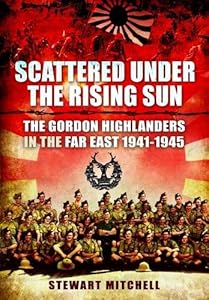 Scattered Under The Rising Sun: The Gordon
Highlanders in the Far East 1941-1945 by Stewart Mitchell
(2013) - Detailed work on the history and movements of a whole unit,
the Gordon Highlanders 2nd Battalion, with many individual stories by
the men themselves. In the Appendix is a list of every Gordon
Highlander who was in the 2nd Battalion and in Singapore in 1941, over
1000 men, 700 of which include their photographs. Mitchell is a
volunteer researcher at the Gordon
Highlanders Museum. See additional news article, "New
book records experiences of Gordon Highlander POWs." Scattered Under The Rising Sun: The Gordon
Highlanders in the Far East 1941-1945 by Stewart Mitchell
(2013) - Detailed work on the history and movements of a whole unit,
the Gordon Highlanders 2nd Battalion, with many individual stories by
the men themselves. In the Appendix is a list of every Gordon
Highlander who was in the 2nd Battalion and in Singapore in 1941, over
1000 men, 700 of which include their photographs. Mitchell is a
volunteer researcher at the Gordon
Highlanders Museum. See additional news article, "New
book records experiences of Gordon Highlander POWs." |
 Building for War - The
Epic Saga of the Civilian Contractors and Marines of Wake Island in WWII
by Bonita Gilbert (2012) - A thorough background history of Wake Island
and the 1,145 civilian contractors who assisted the Marines in
defending Wake Island at the very outset of the Pacific War, and what
happened to those amazing men as captives of the Japanese. Remember
Pearl Harbor, Remember Gallant Wake! Building for War - The
Epic Saga of the Civilian Contractors and Marines of Wake Island in WWII
by Bonita Gilbert (2012) - A thorough background history of Wake Island
and the 1,145 civilian contractors who assisted the Marines in
defending Wake Island at the very outset of the Pacific War, and what
happened to those amazing men as captives of the Japanese. Remember
Pearl Harbor, Remember Gallant Wake! |
 Ed & Ivet: The True Story of a World
War II POW Romance by William Bacon (2010) - "War, like
hurricanes, can also leave new beginnings in its wake," writes William
Bacon, weaving a fascinating story of beauty from ashes. His father,
Ed, was a civilian worker with the CPNAB on Guam, captured by the
Japanese at the outbreak of WWII, and sent to several camps in Kobe. It
was while imprisoned there that he met Ivet, the daughter of Turkish
civilians, who would often pass by the camp, from which sparked a
lasting romance. A very well-written and movie-worthy read. Ed & Ivet: The True Story of a World
War II POW Romance by William Bacon (2010) - "War, like
hurricanes, can also leave new beginnings in its wake," writes William
Bacon, weaving a fascinating story of beauty from ashes. His father,
Ed, was a civilian worker with the CPNAB on Guam, captured by the
Japanese at the outbreak of WWII, and sent to several camps in Kobe. It
was while imprisoned there that he met Ivet, the daughter of Turkish
civilians, who would often pass by the camp, from which sparked a
lasting romance. A very well-written and movie-worthy read. |
| A Child in the Midst of Battle
by Evelyn Berg Empie and Stephen H. Mette - An amazing story of how
non-interned civilians survived WWII in Manila, as told by a young girl
who was there with her family. Here is a book that should be in every
school library. |
| The Barbed-Wire University: The Real Lives
of Prisoners of War in the Second World War by Midge Gillies
- Stories based on the experiences of POWs, what they really did and
learned in camps, and how they survived the brutalities and horrors, in
both Europe and the Far East. |
| In Good Hands: The life of Dr Sam Stening,
POW by Dr. Ian Pfennigwerth - "The remarkable story of Sam
Stening – Royal Australian Navy doctor – who, as a prisoner of the
Japanese, saved the lives of countless Allied servicemen... working
with other American medical personnel striving to cut the POW death
toll in three camps in Kyushu, including the dangerous shipyard on
Kouyagi Island in Nagasaki." |
 Rising from the Shadow of the Sun: A Story of Love,
Survival and Joy by Ronny Herman de Jong - Fascinating story
based on the diary of the author's mother, Jeannette Herman-Louwerse,
and the author's autobiography telling about her life as a child in the
Dutch East Indies prior to WWII, during the war while at a prisoner
camp with her family, and her struggles and joys afterwards. Rising from the Shadow of the Sun: A Story of Love,
Survival and Joy by Ronny Herman de Jong - Fascinating story
based on the diary of the author's mother, Jeannette Herman-Louwerse,
and the author's autobiography telling about her life as a child in the
Dutch East Indies prior to WWII, during the war while at a prisoner
camp with her family, and her struggles and joys afterwards. |
 Survivor: An American soldier's heartfelt
story of intense fighting, surrender, and survival from Bataan to
Nagasaki by Francisco L. Lovato - Biography of Master Sgt.
Frank Lovato, captured on Bataan and spent time at O'Donnell, Omuta #17
and Fukuoka #1. Survivor: An American soldier's heartfelt
story of intense fighting, surrender, and survival from Bataan to
Nagasaki by Francisco L. Lovato - Biography of Master Sgt.
Frank Lovato, captured on Bataan and spent time at O'Donnell, Omuta #17
and Fukuoka #1. |
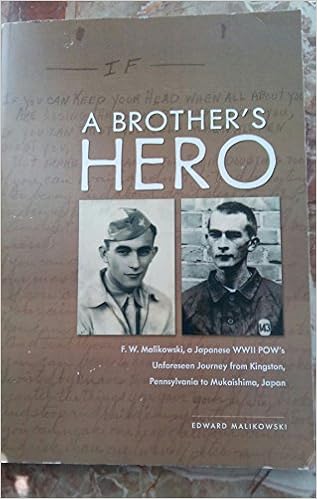 A Brother's Hero by Edward
Malikowski - Very informative self-published work on the author's
brother, Francis W. Malikowski, who was with the 20th Air Base Squadron
at Nichols Field in the Philippines, captured on Bataan, and imprisoned
in several camps to end up at Hiroshima camp #4 (Mukaishima). Copies
are available for purchase from the author at 1342 Glen Echo Rd., West
Chester, PA 19380. A Brother's Hero by Edward
Malikowski - Very informative self-published work on the author's
brother, Francis W. Malikowski, who was with the 20th Air Base Squadron
at Nichols Field in the Philippines, captured on Bataan, and imprisoned
in several camps to end up at Hiroshima camp #4 (Mukaishima). Copies
are available for purchase from the author at 1342 Glen Echo Rd., West
Chester, PA 19380. |
 Unbroken: A World War II Story of Survival,
Resilience, and Redemption by Laura Hillenbrand - A MUST READ! Amazing story of Louis Zamperini, former
Olympic runner, who was captured by the Japanese after his B-24 crashed
in the Pacific and endured 2 years of abuse as his captors tried to
break his will and use him for propaganda purposes. Don't forget to
read the original story Zamperini wrote in 1956, which has been updated
in this 2011 (2003) book, Devil at My Heels: A Heroic Olympian's
Astonishing Story of Survival as a Japanese POW in World War II. Unbroken: A World War II Story of Survival,
Resilience, and Redemption by Laura Hillenbrand - A MUST READ! Amazing story of Louis Zamperini, former
Olympic runner, who was captured by the Japanese after his B-24 crashed
in the Pacific and endured 2 years of abuse as his captors tried to
break his will and use him for propaganda purposes. Don't forget to
read the original story Zamperini wrote in 1956, which has been updated
in this 2011 (2003) book, Devil at My Heels: A Heroic Olympian's
Astonishing Story of Survival as a Japanese POW in World War II. |
| "I’m
Praying Hard for You," Love Letters to a Death Camp: The World War II
Ordeal of Bill and Jo Brenner by Linda McCaffery - Story of
William Brenner, an Army doctor taken prisoner by the Japanese in the
Philippines and eventually shipped to mainland Japan, to spend time at
Fukuoka camps #6-D (Tanoura) and #25-B (Omuta).Very interesting history
of related WWII events. |
| We Volunteered
by Timothy C. Ruse - A biography of Carl Ruse, survivor of the Bataan
Death March, and POW at Camp O'Donnell, Cabanatuan, Davao Penal Colony,
and Nagoya #5 Yokkaichi. |
| Ghosts
of Canopus: The War Diary of a Lucky Old Lady by Everett Perry
- Details the history WWII’s USS Canopus (AS 9) and her crew as
prisoners of war of the Japanese. 250 photographs and maps illustrate
the journey of this ship and her crew as POWs of Japan. Each step in
this heroic ship to prisoner of war story is fully covered including a
roster of the 548 shipmates captured and held as POWs of Japan. |
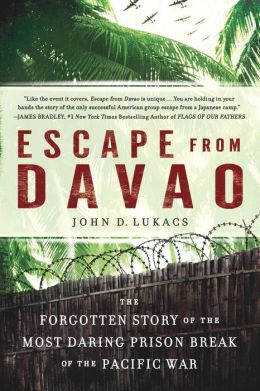 Escape
From Davao: The Forgotten Story of the Most Daring Prison Break of the
Pacific War by John
D. Lukacs - Called by the War Department "the greatest story of the
war in the Pacific" in 1944, twelve special men, survivors of the
Bataan Death March, Corregidor veterans and two Filipino convicts,
broke out of the reportedly escape-proof Davao Penal Colony on Mindanao
in April 1943 -- the only large-scale escape from a Japanese prison
camp in the Pacific Theater during World War II. Escape
From Davao: The Forgotten Story of the Most Daring Prison Break of the
Pacific War by John
D. Lukacs - Called by the War Department "the greatest story of the
war in the Pacific" in 1944, twelve special men, survivors of the
Bataan Death March, Corregidor veterans and two Filipino convicts,
broke out of the reportedly escape-proof Davao Penal Colony on Mindanao
in April 1943 -- the only large-scale escape from a Japanese prison
camp in the Pacific Theater during World War II. |
| Keep
the Men Alive: Australian POW doctors in Japanese captivity by
Rosalind Hearder - Story of 106 Australian medical officers who did an
amazing job of keeping POWs alive. Good selection of photos, some
showing the ingenious devices created to help patients. |
| A
Gordon Highlander if ever I saw one by William Ross Young and
John Duff - True account of a young Gordon Highlander's experiences as
a Japanese POW in Singapore, the Burma Siam Railway and Mainland Japan. |
| Bataan Diary: An American Family in WWII,
1941-1945 by Chris Shaefer (2004) - Based on the diary of
Lt. Col. Frank Loyd, a very well-written story of Americans who evaded
or escaped capture by the Japanese in the Philippines and their
activities with Filipino guerrillas. Beautifully interwoven with the
diary and correspondence of Loyd's wife at home in the US. |
| Tjideng Reunion by
Boudewyn van Oort - Memoir of Java. In particular, story of South
African Volunteers [Not read or reviewed]- See Essay
by author |
| Tears
in The Darkness by Michael & Elizabethy M. Norman. Not
particularly highly rated by ex POWs. All too many errors. |
| George McNab
by Brian Coutts. British POW rescued at Fukuoka #25. |
| First
Captured, Last Freed - Story of Ed Hale, survivor of the USS Penguin sinking on the first
day of the war. |
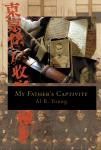 "My Father's Captivity"
by Al Young. This book is destined to become the classic POW story. If
you want one of the five best books ever written about the POWS, this
has to top your list. Beautifully written emotional, factual and the
author clearly places you into the mind of a prisoner. If you want to
buy just one book to understand the story of the POWs, buy this one
book. [August 2009] "My Father's Captivity"
by Al Young. This book is destined to become the classic POW story. If
you want one of the five best books ever written about the POWS, this
has to top your list. Beautifully written emotional, factual and the
author clearly places you into the mind of a prisoner. If you want to
buy just one book to understand the story of the POWs, buy this one
book. [August 2009] |
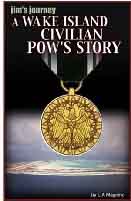 Jim's
Journey - A Wake Island Civilian POW's Story by Leilani A.
Mahnino; Hellgate Press (2001) Central Point, OR. A detailed and well
illustrated story of the civilian cintractors captured on Wake Island,
Almost half of these men perished in captivity and close to 200 endured
the horrors of the Sasebo POW Camp. This is the single best book about
the civilians captured on Wake Island... in fact, highly recommended
even for the story of the Marine who almost stopped the Japanese
invasion. Jim's
Journey - A Wake Island Civilian POW's Story by Leilani A.
Mahnino; Hellgate Press (2001) Central Point, OR. A detailed and well
illustrated story of the civilian cintractors captured on Wake Island,
Almost half of these men perished in captivity and close to 200 endured
the horrors of the Sasebo POW Camp. This is the single best book about
the civilians captured on Wake Island... in fact, highly recommended
even for the story of the Marine who almost stopped the Japanese
invasion. |
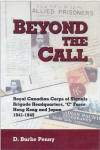 Beyond
The
Call by D.Burke Penny. The full and detailed story of the 33
Canadian Corps of Signals captured in Hong Kong. Detailed story but
with a unique perspective on how the families at home endured during
the war. Published by the Hong Kong Veterans Commemorative Assoc. Beyond
The
Call by D.Burke Penny. The full and detailed story of the 33
Canadian Corps of Signals captured in Hong Kong. Detailed story but
with a unique perspective on how the families at home endured during
the war. Published by the Hong Kong Veterans Commemorative Assoc.
[August 2009] |
 "..when
men must live" by Kenneth B. and James T. Murphy, I West
Publications, 6789 Quail Hill Parkway #715, Irvine CA 92603, published
2009. Memoir of Army Air Corps Tech Sgt James T. Murphy captured on
Bataan and eventually rescued at Sendai #6, Hanawa. Extensive
description of initial attacks on Nichols Field, Bataan battles and
experiences in various POW camps. Exceptionally good detail of the hell
ship, Noto Maru. The values instilled in him as a youth allowed him to
survive [June 2009]. "..when
men must live" by Kenneth B. and James T. Murphy, I West
Publications, 6789 Quail Hill Parkway #715, Irvine CA 92603, published
2009. Memoir of Army Air Corps Tech Sgt James T. Murphy captured on
Bataan and eventually rescued at Sendai #6, Hanawa. Extensive
description of initial attacks on Nichols Field, Bataan battles and
experiences in various POW camps. Exceptionally good detail of the hell
ship, Noto Maru. The values instilled in him as a youth allowed him to
survive [June 2009]. |
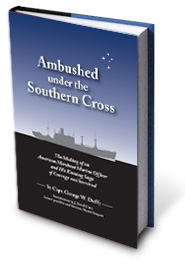 Ambushed Under the Southern Cross: The
Making of an American Merchant Marine Officer and His Ensuing Saga of
Courage and Survival Ambushed Under the Southern Cross: The
Making of an American Merchant Marine Officer and His Ensuing Saga of
Courage and Survival
This is a fabluously detailed story of Merchant Marine Capt (Ret).
George Duffy, captured when his ship, American Leader, was sunk by a
German commerce raider. He was transferred to Japanese control and
spent time in Java, Singapore and Sumatra. One of the rare books that
tells of the experiences on the "Sumatra" Death Railway. Beatuifully written story of his youth, his years of
education to become a merchant Marine officer and the years of
experience before the war. This book is an absolute "must have" for
historians of the Merchant Marine in the early war years. |
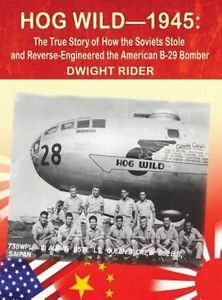 |
Research by Dwight Rider:
Hog Wild-1945: The True Story of How the
Soviets Stole and Reverse-Engineered the American B-29 Bomber
Rider was a fellow
researcher at Mansell.com. In this published work, he puts to rest many
a myth, mystery and conspiracy tale in his extensive study into the
last B-29 casualty of WWII, the Hog Wild, and the legend surrounding
that POW relief supply flight. This well-documented book is a definite
read (or rather, intense study) for anyone interested in a basic
background history on B-29 strategic bombing, POWs of the Japanese and
their camps in Korea, details about what was really going on with
Japan's A-bomb research, and the Russian plot to get their hands on a
B-29 in order to build their own.
Tsetusuo Wakabayashi
Revealed
A very enlightening
supplement to the above story, giving background history on the rumors
regarding Japan's atomic bomb test in August 1945.
Japan's
Biological and Chemical Weapons Programs; War Crimes and Atrocities:
Who's Who, What's What and Where's Where – 1928-1945
Ever-expanding work started by Rider on
everything you ever wanted to know (and more!) about Japanese
bio-chem-weapon research, including Unit 731 and its affiliates.
Burn before Reading: The Japanese Atomic
Bomb Program, the Battles of the Chosin Reservoir, and the Cave at
Koto-ri
Intelligence analyst Rider gives his
readers an eye-opening story about a mystery that lies within a cave in
North Korea, and the struggles that many in intelligence work face.
The Japanese Wartime Atomic Energy and
Weapons Research Program – Seishin (Chongjin), Northern Korea. 1938 -
1984
The
Kuroda Papers: Translation and Commentary
The Best Books on WWII History?
Some thoughts by Dwight Rider on the recent publication of Richard
Frank's Tower
of Skulls, said to be "one of the six best books in English
about World War II":
Here is a list of what I
consider the best:
The Second World War
by Winston Churchill
The Rise and Fall of the Third Reich by William
Shirer
Hiroshima by John Hersey
Unbroken by Laura Hillenbrand
With the Old Breed by E. B. Sledge
Guadalcanal Diary by Richard Tregaskis
The Longest Day by Cornelius Ryan
Though I have read all of them, none is my favorite. There are far too
many aspects of the war for anyone to address all of them, other than
in passing, in just one book.
In the Pacific, John Costello wrote a lot ( The Pacific War:
1941-1945), and not very well, I say. How he got by with some of
the mistakes he makes in his book, I will never know. I have, I think a
copy of all his books for reference, but they are not my first choice.
Gavan Daws ( Prisoners of the Japanese: POWs of World War II in the
Pacific) sems to stand high on POW's held by Japan, but he
also had his own agendas in writing the book. There are some very good
POW memoirs and memoirs of Bataan that should not be overlooked. There
are also several must-have books on codebreaking.
I myself do not think you could become much of an expert on any single
aspect of the war just by reading six books. You might become an expert
on just one battle by reading six books on that subject, but not the
entire war.
I have hundreds, thousands(?) of books, and I am learning a heck of a
lot through Tower of Skulls. He brings a sort of pro-and-con
argument to everything. I nearly worship "Vinegar Joe" Stillwell, and I
know he had his faults, but I learned a few things that most have only
glossed over. I would not call it the best book I have ever read, but
like the most recent works on the Battle of Midway, he is clearing away
a lot of the clouds. My biggest issue with Tower of Skulls is
that I thought it was 750 pages long, but it ends at about page 571
with the surrender of Wainwright on Corregidor. I was left wanting
more. Hard to say if it is the "best," but I was unhappy when I
finished the book. I was and remain eager to see the next volume.
|
|
|
 |
4000
Bowls of Rice: A Prisoner of War Comes Home |
 |
Unjust
Enrichment: How Japan's Companies Built Postwar Fortunes Using American
Pows |
 |
Guests
of the Emperor: The Secret History of Japan's Mukden POW Camp
"Linda Goetz Holmes has done it again. As with her seminal work, Unjust
Enrichment, that exposed the depth of Japanese industrialists and
manufacturing companies' involvement in the pursuit of war profits, she
now reveals the truth behind the rumors and horrors of the Mukden
prisoner of war camp.
"Like an onion, Holmes peels away the layers of secret horrors, one
layer at a time. At last, we see the proof of Japanese medical
experiments by the notorious Unit 731 on American prisoners at Mukden,
the largest fixed POW camp in the Empire. She carefully documents the
use of germ warfare experiments upon the men and the endless brutality
and torture of the prisoners by Japanese guards and Japanese nationals.
The full story of the four men who sought to escape is told in detail
and Holmes traces not just their escape but their capture and the abuse
of the remaining POWS in revenge for the 'loss of face' by the guards.
"Holmes spares no one in telling the truth about the Mukden camp,
including the utter incompetence of most American officers, especially
the ranking officer, Major Stanley H. Hankins. Few ever cared about the
suffering of their subordinates and were willing to steal their food
and medicine for their personal use. It is not a story of honor, but
truth is rarely pretty.
"A magnificent work of research and narrative that is destined to be
the definitive work about the Mukden POW camp." -- Roger Mansell,
director, Center For Research Allied POWS Under the Japanese
|
Operation
Plum: The Ill-fated 27th Bombardment Group and the fight for
the Western Pacific by Adrian R Martin and Larry W. Stephenson [Review] 
The Burma
Railroad - The Drawings of Jack Chalker
The sample pages give you an idea of the depth of anguish
suffered by the men who slaved for Japan on the infamous railroad.
While not reviewed, we have seen numerous example of Jack Chalker's
drawings and believe this should be part of any serious POW book
collection. (Cover Image)
Deadly December,
The Battle of Hong Kong by Ronald C. Parker
A thorough review of the battle for Hong Kong from a Canadian
perspective. Parker's father, Major Maurice A. Parker, was Commanding
office of D Coy, Royal Rifles of Canada. The Canadian forces in Hong
Kong were the Royal Rifles of Canada and the Winnipeg Grenadiers. (Not
reviewed)
Remembered: The History of the
Commonwealth War Graves Commission by Julie Summers.
Thorough review by British historian Jonathan Moffatt.
If
I Get Out Alive, World War II Letters and Diaries of William H.
McDougall Jr., by William H. McDougall, Jr, edited by Gary
Topping (ISBN 978-0-87480-891-9). University of Utah Press, Salt Lake
City, 2007; 336 pp., 6 x 9, 20 black & white photos.
'C' Force
Decorations, Medals, Awards and Honours by Vincent Lopata
The book documents the decorations, medals, awards and honours
including citations given to soldiers of the Canadian Army that fought
at the Battle of Hong Kong, December 1941. Following the battle they
became Prisoners of War of the Japanese from January 1942 until August
1945.
The Defining
Years of the Dutch East Indies, 1942-1949 - Edited by Jan A.
Krancher
Survivors' Accounts of Japanese Invasion and Enslavement of Europeans
and the Revolution That Created Free Indonesia by Jan A. Krancher.
Published by McFarland. 24 of 60+ interviews selected to present a
picture of their internment and story of their efforts to survive,
during and after the war. Krancher has done an excellent job, not just
describing the horrors of Japanese internment but has researched in
depth the long ignored period called "The Bersiap", the time when the
Indonesian fought a war of terror against the Dutch. Here again, the
terrorist of the Islamic world attacked and slaughtered innocent men,
women and children to drive the Dutch from their midst. The parallels
to day cannot be ignored. It is not history that repeats itself but
human nature. Well done. Credit card orders: Call McFarland's toll free
- 800-253-2187 or order through publisher's
web site.
Angel
of the East Indies: Biography of the Van Dooremolen Family by
Dino Fanara
A revelation of events during World War II that have missed the world's
conscience... until now. An epic story of faith, romance and a Dutch
families struggle to survive their P.O.W. internment during World War
II. It is the story of Hendrika and Adolf Van Dooremolen. Comment by Center: Well done. She was interned
in Java while he endured the Death Railway and eventual rescue at Fukuoka
#21 Nakama POW Camp.
The Sinking of the Lisbon
Maru- Britain's Forgotten Wartime Tragedy by Tony Banham
Noted author and historian, Banham has again proven his literary
talents. The horrors of the hell ship are seen through the eyes of the
survivors. The Japanese hostility towards Europeans motivates their
action to murder the prisoners- locking down the hatches and denying
them a chance for rescue. A magnificent study of human nature at its
best and worse.
1220
Days
The story of US Marine Edmond Babler and his experiences in Japanese
Prisoner of War Camps during World War II. self published, Authorhouse,
Bloomington IN, 2004. Fairly good narrative of Babler's experiences
from capture on Carregidor to labor details at Palawam, McKinley Field,
Nielsen Field, Zeblon Field, voyage on the Noto Maru and slave labor at
Fukuoka Branch #5 Omine. Major error in description (not witnessed) of
the massacre on Palawan. [http://robertcdaniels.com/]
The Colonel
of Tamarkan - Philip Toosey and the Bridge on the River Kwai by
Julie Summers. Simon & Shuster; See review by noted historian,
Jonathan Moffatt.
Angel
On My Shoulder by Geoffrey Monument
British soldier captured in Mayaya details his experiences including
camps in Taiwan, Tokyo and Sendai #2 (Furukawa - Iwaki Coal Mine)- A
simple book and a good read.
I AM
ALIVE by Jackson, Charles R. (Edited by B.H. Norton)
Marine captured on Corregidor and rescued at Kamioka.
Triumphs And
Tragedies- Corregidor and its aftermath by Baker, Arthur B. (As
told to J. Carlile Baker)
Surprisingly well told story of POW taken to AOMI Mine on northern
Honshu. Well written story with great detail regarding the Omi (Aomi)
Camp... which is rarely discussed.
Books
Reviewed and highly recommended:
Captives
of the Empire - The Japanese Internment of Allied Civilians in
China 1941-1945
Every so often, a book is produced that simply "wraps up" the whole
story. Japan interned and mistreated thousands of Allied civilians in
the conquered areas of China. With years of research, editing and
careful documentation, Dr. Greg P. Leck has produced the finest book ever written about civilian
internees in China. Extensively illustrated, Leck has woven a
masterpiece of history. Stories of joy, sadness, murder and horror from
numerous former inmates creates a silken tapestry of the times. One
senses the ordeals and thrumphs in exquisite detail. Includes a
complete nominal roll of all internees. If you want one book about the
China internee experience, this is an absolute "must have". Expensive
but truly worth every penny.
 Conduct Under Fire - Four American Doctors and their Fight for Life as
Prisoners of the Japanese 1941-1945. Conduct Under Fire - Four American Doctors and their Fight for Life as
Prisoners of the Japanese 1941-1945.
Awarded the 2007 Colby Medal for historical writing. John Glusman, son
of a Navy doctor captured on Corregidor, recounts the devotion and
friendships of his father's ordeal and those of his three fellow Navy
physicians.
 From 6-S-7 Jack Leaming's amazing memoir From 6-S-7 Jack Leaming's amazing memoir
Shot down on the Marcus Island Raid in early March 1942. Sent to Ofuna,
Zentsuji and finally rescued at Toyama
 Girochio,
A GI's story of Bataan and Beyond Girochio,
A GI's story of Bataan and Beyond
One of the very best POW books ever
written. A Must have for any student
of the POW experience; definitely one of the five best. The story of
John Poncios' experiences from Bataan to Hirohata. [Our FULL Review] Extremely well written (Amazon
link).
 Proof
Through the Night: A B-29 Pilot Captive in Japan (As told by
Ernest Pickett) Proof
Through the Night: A B-29 Pilot Captive in Japan (As told by
Ernest Pickett)
Story of B-29 airman shot down on first air raid over Japan when Yawata
was bombed by B-29s out of China [Our Review]
 Long
Night’s Journey into Day: Prisoners of War in Hong Kong and Japan,
1941-1945 by Charles Roland (2001)
Long
Night’s Journey into Day: Prisoners of War in Hong Kong and Japan,
1941-1945 by Charles Roland (2001)
Excellent recap of the defense of Hong Kong and the experiences of the
POWS, a great deal centered upon their health. Outstanding discussion
of the various Jap hospitals, Sendai #2 and Nagasaki camps. Massacres
in Hong Kong well described along with civilian experiences. Excellent
descriptions but even better discussions relating the Japanese
treatment of POWs and their concepts of Bushido vis a vis prisoners.
Best possible book to understand the fanatic devotion to Japan and the
Emperor. Scary parallels to today's Moslem terrorists.
 Wartime
Trilogy Wartime
Trilogy
A combined set of three outstanding books. Ray Parkin's "Out of the
Smoke", "Into the Smother", and, "The Sword and the
Blossom". Recounts his experiences on the HMS Perth (sunk),
the Death Railway and eventual slavery in the Ohama Mines (Hiroshima
#9).
Each book, alone, is a literary masterpiece of Australian military POW
experiences but together, a legacy that will last for centuries. If
you had but one book to keep about the POW's ordeal, this is the single
best. See FULL REVIEW
 Notify Alec Rattray Notify Alec Rattray
A young Scottish officer, Captain Atholl Duncan, maintained a detailed
diary and, along with letters and notes written before and during the
war, author Meg Parkes recreates a stunning portrayal of his life
before and after the surrender on Java. If read only for the
experiences, maps and illustrations while captive on Java, the book is
worth every cent. Interspersed with copies of actual letters, diary
entries, photographs and maps, Parkes paints a lavish portrait that
reflects the experiences of hundreds. First of two books leads the
reader from Java, via hell ships to Hokkaido and thence to Zentsuji. The
good news? The sequel, '...A.A. Duncan is OK',
which covers the years 1944-1946 is now available. Plan to purchase the
set.
 Not The Slightest
Chance [Cover] Not The Slightest
Chance [Cover]
The Defense of Hong Kong, 1941 by
Tony Banham. An absolute must have
reference book for anyone who want to know what happened in
the battle for Hong Kong. Banham accounts for almost every econd of
battle and every man who fought. Like the
"Unsung Heroes of the RAF", Banham's book is the single best
summation of this almost forgotten battle. A linked web site give the
disposition of every single soldier and almost every civilian
iincluding the internee camps. If ever an author deserves an OBE from
Queen Elizabeth II, Banham merits two. Highly priced but still
worthwhile.
 Forgotten
War Forgiven Guilt [Cover Picture] Forgotten
War Forgiven Guilt [Cover Picture]
The story of MacArthur's often overlooked 13th Air Force. In fact, we
know of no other book on the subject. Author David Witts flew over 50
missions to rescue downed fliers, secret runs deep into enemy
territory, and searches for enemy ships. The facts are indisputable as
he retained the rescue squadron's entire action logs for the campaign.
Witts's plane was the PBY that flew behind the Japanese lines to rescue
the Palawan survivors who made it to the coast of China. His "second
hand" account of the massacre paints a vivid picture. An unusual page
turner even though not specific to individual POW experiences. A
brilliant contribution to history.
Exerpt from another review:
"This book is wonderful beyond
description !!! It captivates so much that deserves to be said and
circulated .... is so well written that I am spellbound by it's magical
coverage. While reading and trying to memorize - I couldn't help but
imagine my being able to get your permission (attributing your book as
the source of some classic excerpts) to use them in future speeches to
a variety of audiences!"
 Unsung Heroes of the RAF -
[Detailed Review by Center for Research]
Unsung Heroes of the RAF -
[Detailed Review by Center for Research]
Prisoners of the Far East. An absolute must have
reference book for anyone seeking information on the RAF POWS.
Gives name, rank, etc. plus what happened to almost every man or group
of men as they were transported for slavery. The authors have
contributed the definitive accounting that will forever serve history.
They have done what the British government failed to do, account for
their men in the Far East. See also the RAF
in SE Asia.
 The Secret Camera: A Marine's Story: Four
Years as a POW by Terence S. Kirk The Secret Camera: A Marine's Story: Four
Years as a POW by Terence S. Kirk
One of the two best books ever written about the China Marines and
slave labor in Tobata (camp site).
Contains the only pictures ever taken inside a Japanese POW camp by a
POW during the war. Photos reveal the deliberate starvation of the men.
|
 Copyright:
Hoover Institution
Copyright:
Hoover Institution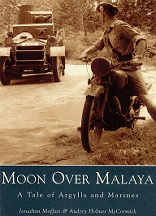 "Moon over Malaya is the true story of two of the most
famous regiments in Britain, the 2nd Argyll & Sutherland
Highlanders and their compatriots, the Royal Marines, who fought side
by side against the Japanese invaders. The two regiments made their
last stand in February 1942 in Singapore."
"Moon over Malaya is the true story of two of the most
famous regiments in Britain, the 2nd Argyll & Sutherland
Highlanders and their compatriots, the Royal Marines, who fought side
by side against the Japanese invaders. The two regiments made their
last stand in February 1942 in Singapore."































 Rising from the Shadow of the Sun: A Story of Love,
Survival and Joy
Rising from the Shadow of the Sun: A Story of Love,
Survival and Joy Survivor: An American soldier's heartfelt
story of intense fighting, surrender, and survival from Bataan to
Nagasaki
Survivor: An American soldier's heartfelt
story of intense fighting, surrender, and survival from Bataan to
Nagasaki A Brother's Hero
A Brother's Hero Unbroken: A World War II Story of Survival,
Resilience, and Redemption
Unbroken: A World War II Story of Survival,
Resilience, and Redemption








